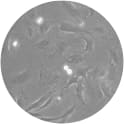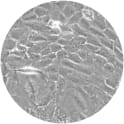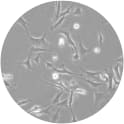MEF ULK1 KO (SIM) Cell Line
Invented by Dr Sharon Tooze from The Francis Crick Institute
Invented at Cancer Research UK London Research Institute: Lincoln's Inn Fields
- Datasheet
- References (4)
- Inventor Info
Info
| Catalogue Number | 151715 |
| Antigen/Gene or Protein Targets | ULK1 |
| Host | Mouse |
| Tissue | Embryo |
| Disease Keywords | Cancer, neurodegeneration, infectious disease |
| Model | Knock-Out |
| Relevance | The MEF ULK1 KO (SIM) cell line can be used to study ULK1-dependent processes, including autophagy. A more complete phenotype requires depletion of ULK2 by RNAi . Mouse embryonic fibroblasts derived from a ULK1 homozygous knock out mouse embryo and immortalized by serial passaging (spontaneous transformation). |
| Production Details | Primary embryonic fibroblasts were isolated from the embryos of a pregnant female Ulk1-/- mouse at day 13p.c. The MEFs were immortalised by SIM using a standard serial passaging protocol. |
| Research Area | Apoptosis and Programmed Cell Death, Cell Signaling & Signal Transduction, Metabolism, Neurobiology |
| Growth/Phenotype Keywords | Autophagy, fibroblast |
| Recommended Growing Conditions | DMEM + 20% FCS + 2mM Glutamine + pen/strep |
| Cellosaurus ID | CVCL_5A52 |
References: 4 entries
McAlpine et al. 2013. Autophagy. 9(3):361-73. PMID: 23291478.
Regulation of nutrient-sensitive autophagy by uncoordinated 51-like kinases 1 and 2.
Europe PMC ID: 23291478
Chan et al. 2009. Mol Cell Biol. 29(1):157-71. PMID: 18936157.
Kinase-inactivated ULK proteins inhibit autophagy via their conserved C-terminal domains using an Atg13-independent mechanism.
Europe PMC ID: 18936157
Add a reference
References: 4 entries
McAlpine et al. 2013. Autophagy. 9(3):361-73. PMID: 23291478.
Regulation of nutrient-sensitive autophagy by uncoordinated 51-like kinases 1 and 2.
Chan et al. 2009. Mol Cell Biol. 29(1):157-71. PMID: 18936157.
Kinase-inactivated ULK proteins inhibit autophagy via their conserved C-terminal domains using an Atg13-independent mechanism.
Add a reference













